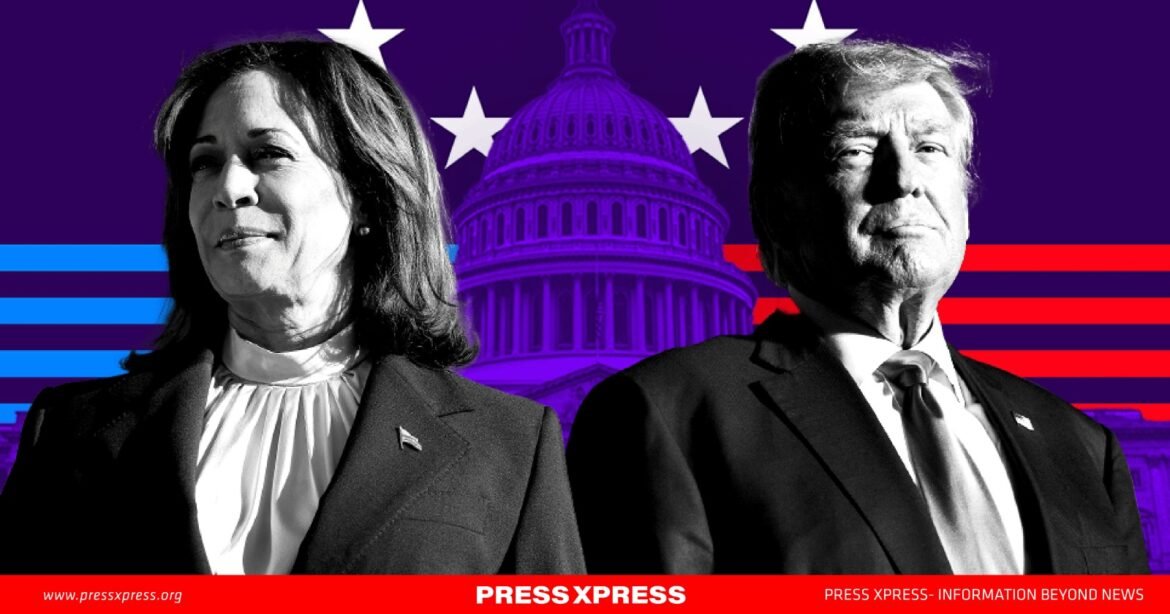With days to count before the election, Donald Trump and Kamala Harris are deploying strategic last-minute efforts to energize their bases and sway the undecided. In a rare convergence of campaign tactics, each is staging high-profile events at iconic venues—Trump at Madison Square Garden and Harris at the White House Ellipse—to reinforce their core messages. Trump is honing in on border security, a pillar of his political identity, while Harris is advocating for abortion rights and her broader vision for leadership.
This final sprint, amidst a razor-thin race, reflects a calculated attempt by both campaigns to harness the spotlight in battleground regions where even slight swings could determine the election outcome. Their strategies not only underscore the polarized political landscape but also highlight the competing visions for America’s future, marked by ideological contrasts in key policy areas like immigration and reproductive rights.
Trump’s Madison Square Garden Rally
Trump’s decision to rally at Madison Square Garden is more than a nod to his roots; it is a calculated move to maximize visibility in both New York and swing states. Though New York is traditionally Democratic, Trump’s team believes the media attention surrounding his Madison Square Garden appearance will amplify his message on border security in battleground states, where immigration remains a contentious issue.
Trump’s rhetoric, focused on a “nation under siege” by undocumented immigrants, aligns with his long-standing immigration stance, which includes pledges to expand deportation policies if re-elected. Polls reveal that Trump holds a strong lead on immigration among likely voters, with a recent New York Times/Siena poll indicating a 54% to 43% advantage over Harris on the issue.
His rally is paired with a fundraiser to support Republican congressional candidates, a bid to bolster GOP representation in vulnerable New York-area seats. Trump’s campaign is betting that his focus on border security will resonate with voters concerned about economic strain and social impact due to immigration policies.
Harris’s Ellipse Rally
Harris’s campaign, meanwhile, is spotlighting abortion rights, using the Ellipse rally to frame the election as a choice between contrasting visions on women’s rights and governance. Harris has sharpened her messaging by drawing a stark comparison between her “to-do list” and what she calls Trump’s “enemies list.” This narrative is designed to appeal to moderate Republicans and independents who may view Trump’s approach as divisive. Recent polling underscores the gender gap, with women significantly favoring Harris on reproductive issues.
Harris’s advocacy for abortion rights is especially targeted at battleground states with restrictive abortion laws, like Texas, which has one of the strictest regulations. Her campaign’s mobilization efforts focus on turning out younger and female voters, groups historically underrepresented in midterm elections. Harris’s team is also leveraging star power, with events featuring celebrities like Beyoncé and Willie Nelson, aimed at boosting turnout among politically engaged, progressive demographics.
Immigration versus Reproductive Rights
Both campaigns’ closing arguments highlight the polarized issues that have shaped the current election. Trump’s emphasis on immigration taps into the longstanding frustrations among voters who see current policies as inadequate for addressing security and economic challenges. His rhetoric suggests that a strong stance on border control is synonymous with restoring order, appealing particularly to rural and suburban voters in swing states.
Conversely, Harris’s focus on reproductive rights speaks to concerns over personal freedoms and government overreach, issues that resonate with urban and suburban voters who are likely to favor progressive policies. The campaigns’ strategic choices reflect a broader ideological divide in American politics, where immigration and abortion rights represent the extremes of the political spectrum. Both camps are heavily investing in voter mobilization, with Harris urging early voting and Trump’s campaign focusing on ensuring voter turnout among infrequent voters.
Impact on Key Battlegrounds
In battleground states like Pennsylvania, Michigan, and Arizona, the campaigns are deploying targeted mobilization strategies to maximize voter turnout. Harris’s team is particularly focused on engaging younger voters, whose participation could tip the scales in traditionally swing regions. Her partnership with high-profile figures, such as Michelle Obama, aims to inspire a sense of urgency among voters who may otherwise sit out the election. Trump’s campaign, however, is focusing on engaging disenfranchised voters who feel disillusioned by current policies. Ohio Sen. JD Vance, Trump’s running mate, has been rallying in key swing regions to energize these supporters, emphasizing that every vote counts in a close election. Both sides are directing significant resources toward early and absentee voting efforts, a strategy that could prove crucial in battleground states where tight races are anticipated.
As Trump and Harris make their final appeals, the contrasting narratives of border security and reproductive rights serve as microcosms of broader societal divides. Their high-stakes rallies in iconic venues underscore the symbolic importance of this election, with each candidate offering a vision shaped by starkly different principles. For voters, these closing arguments encapsulate the core issues that will define the next presidential term, as both campaigns seek to mobilize a decisive base in the final stretch toward Election Day.


